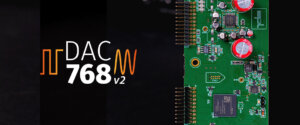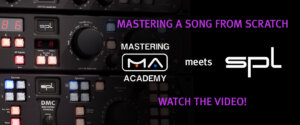We are always very happy when we get positive feedback from our customers. Daniel Scholz from drumasonic recently got the SPL Mercury with the new integrated DAC768v2 and has sent us this great feedback. Of course we don’t want to deprive of it. We hope you enjoy reading!
Dear SPL team,
I received the new Mercury today and would like to give you some feedback after some listening comparisons with the predecessor version.
With the same wiring at the rear and identical settings at the front I only replaced the converter. This is integrated into an optimized setup with very high-quality cables and clocking devices so that there were no other limiting factors; Input via AES1, clocking via Word (Rubidium Atomic Clock), sample rate 192 kHz, uncompressed Hi-Res reference tracks.
The old Mercury has been my highly valued reference monitoring converter for several years now and had prevailed against several other converters in many listening comparisons. I therefore tried to keep my expectations of a further increase in sound quality within limits.
I was all the more surprised after the first few seconds by the very clear, lively and “distinct“ sound of the new Mercury. The bass is somewhat slimmer, but above all “tidier” and less diffuse. Very noticeable is the more distinctive low-mid range, which makes voices in particular sound very coherent and independent. This reminds me of the Crescendo duo, where I had a similar impression in terms of the solid low-mid sound image compared to other preamps.
The phantom center is even more focused and has an additional depth dimension. The stereo stage is overall even more vivid and detailed. The high-frequency range appears somewhat more finely resolved, more open and more precise.
The sound is so clean, uncolored and direct that there were two small, initially irritating phenomena: Firstly, the listening level. I was somewhat surprised that my ears reacted more sensitively to high listening levels than I was used to with the old Mercury. I blame this on the merciless mid-range presence and the “unrestrained” impulse fidelity, which, however, allow for quieter and gentler listening overall without losing any details.
The second observation was that I heard certain distortions here and there, especially on vocals, which I hadn’t noticed with the old Mercury. In other places everything sounded clean again, so I didn’t assume a fundamental converter problem, but rather suspected the specific compression and limiting processes of the respective tracks. To get to the bottom of this, I reconnected the old Mercury to listen to the specific passages.
Before I could concentrate on the artefacts, my attention was first drawn to the very noticeably different sound character of the old Mercury: everything sounded more diffuse, duller, the bass more fuzzy and uncontrolled, the impulses less dynamic; although overall with a supposedly “more pleasant“ sound, this cannot hide the fact that it sounds more colored, weaker and “as if packed in cotton-wool“. The bass is more powerful, but less tight, or as my wife aptly put it: “all over the place“. And this despite the fact that the bass on the old Mercury sounded already so good!
Back to the artefacts: Having been sensitized to those prominent sound spots by the new Mercury, I could now actually hear the same distortions of certain tracks through the old Mercury, although they were less exposed due to the more “foggy” sound character, and thus I apparently hadn’t noticed them before.
This fact has far-reaching consequences for decisions that have to be made when mixing or mastering: How much compression, limiting or loudness maximizing can I put up with without degrading the signal? With the wrong DA converters, many wrong judgments and decisions could obviously be made here, which only become apparent with better converters.
It’s hard to believe, but the comparison between the new and old Mercury leaves me with a similar aha-experience as I had previously experienced between the old Mercury and other converters. Even though the two versions are identical in terms of looks, switches and buttons, functions, connection possibility and the 120V technology, they are very different in terms of sound and character, with a clearly audible positive evolution. I wouldn’t have thought it possible that the chip and/or the adapted electronics would make such a clear difference to the sound, especially as I already had the feeling with the old Mercury that there wasn’t much more that could be improved or that there was still something to be desired. Fortunately, your team of developers striving for perfection has proved me wrong!
A big compliment and congratulations to the whole team on this great development! The dream for the integration of analog devices would now only be: two times the new Mercury and a, hopefully soon available, equally good SPL Mastering AD converter, preferably already starting in version 2!
Best regards from Munich,
Daniel






